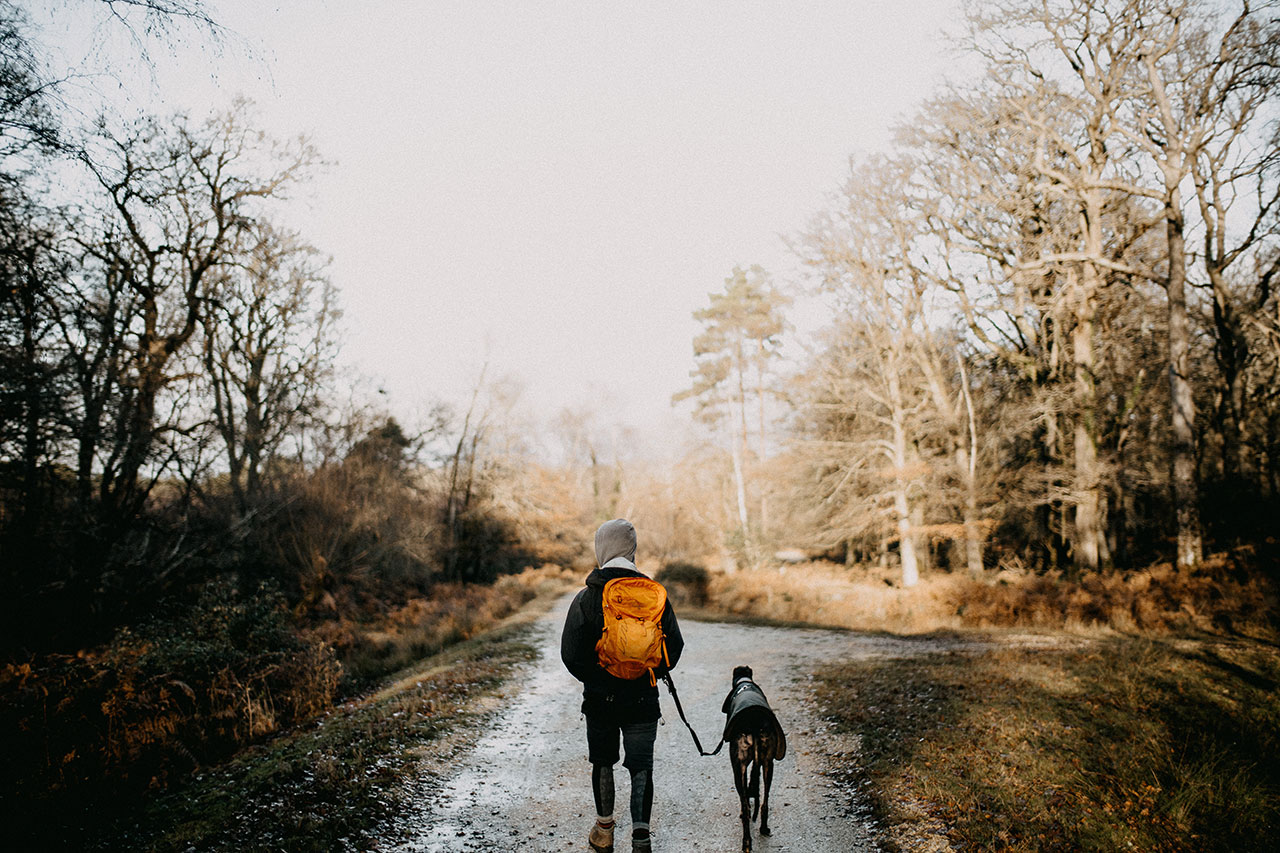Greyhounds are best known for competitive racing, but they also make excellent hiking companions when properly prepared. Their lean muscular build, endurance, and mild temperament equip Greyhounds for covering ground on scenic trails. However, managing their physical limitations, prey drive, and climate sensitivity takes some consideration. Follow this guide for tips to start hiking with a Greyhound dog.
Table of Contents
You may also want to know: How to start hiking
Getting to Know the Greyhound Dog
To set your dog up for success, first understand these key Greyhound traits:
- Moderate energy with an ability to sprint. Avoid overdoing endurance.
- Large, powerful build yet minimal body fat for heat regulation.
- Strong instinct to chase anything moving quickly – rabbits, squirrels, bicycles, etc. Requires training to control.
- Social but can be shy around new stimuli without gradual exposure. Take introductions slowly.
- A thin coat provides little warmth in cold temps or insulation from rain.
When limitations are properly addressed, Greyhounds make steady, enjoyable hiking partners.
Picking Greyhound-Friendly Hiking Trails
When selecting trails, look for:
- Clear leash requirements – Greyhounds must remain leashed unless highly trained. Their chase instinct is strong.
- Softer-packed dirt or grassy surfaces – Avoid technical rocky areas that hurt their sensitive thin paw pads.
- Mostly flat routes – Downhill hiking stresses their weaker hip and shoulder joints. Ascents in moderation are best.
- Partial shade coverage – Direct sun raises overheating risks for their sleek coats. Plan fall through spring hikes.
- Avoiding briars, dense brush, or sticker bushes – Greyhound fur pulls out easily when caught.
- Mileage 2-4 miles to start – Scale up conservatively as fitness permits. Monitor for soreness, favoring, or limping.
Proper Gear for Hiking With a Greyhound Dog
Pack these items to keep your Greyhound comfortable on the trail:
- Lightweight mesh harness that won’t restrict breathing – Greyhounds have deep chest cavities.
- Hooded jackets in rain or cold – Protect their thin coat from precipitation and temperature dips.
- Cooling vest or coat for hot days – Avoid overheating their minimal insulating body fat.
- Dog boots or paw balm – Protect pads from abrasive or hot surfaces. Check its feet regularly.
- Collapsible water bowl and water – Hydration is crucial. Offer smaller amounts frequently.
- Biodegradable waste bags – Leave No Trace ethics apply equally on trails.
Training Tips for Hiking With a Greyhound Dog
Implement training using reward-based methods:
- Reinforce excellent recall skills using high-value treats as motivation. Practice with distractions.
- Teach “Leave it” and “On by” commands – Curb chasing urges but allow investigating politely.
- Acclimate them to wearing a dog backpack – Extra weight builds muscle to support joints. Start light.
- Socialize extensively around bikes, loud noises, other dogs/people, and unfamiliar objects.
Stay positive – Greyhounds shut down with excess pressure. Make training a calm, rewarding pursuit.
Safety Precautions When Hiking With a Greyhound Dog
Be mindful of these special risks when hiking with a Greyhound:
- Bone breaks – Their light bone density makes fractures more likely. Avoid jumping on/off rocks.
- Overheating – Recognize signs like excessive panting and foaming early. Always bring water. Rest in shade.
- Wandering into unsafe terrain if distracted by squirrels or other animals. Maintain solid recall and line-of-sight.
- Cuts on thin skin from brush. Pack gauze and vet wrap for lacerations.
Know your dog’s health and conditioning to avoid overexertion or pushing beyond their limits. End hikes immediately if limping, lameness, or respiratory distress occurs.
After-Hike Care Tips
Once home from an invigorating hike, be sure to:
- Provide fresh water and let them cool down before feeding.
- Inspect paws and coat closely for any irritation, tearing debris, or early blisters.
- Review what commands need more reinforcement. Continue socialization exposure.
- Massage muscles with a conditioning cream. Stretch gently.
With extra diligence, Greyhound dogs thrive in exploring new settings outdoors. Support their dedication to following your lead by choosing adventures that leave them happily exercised but not exhausted.
Related Links:
https://en.wikipedia.org/wiki/Hiking
